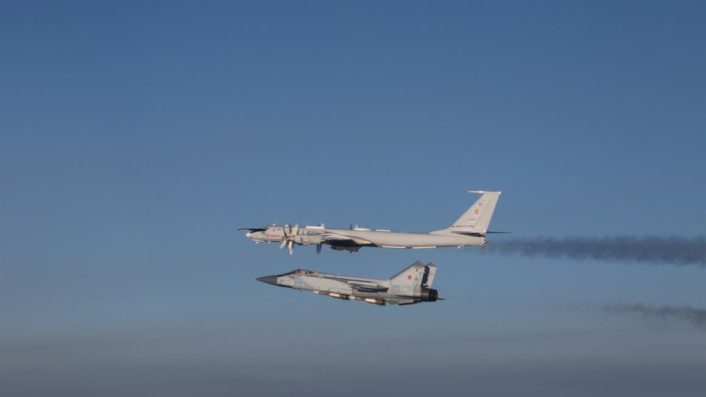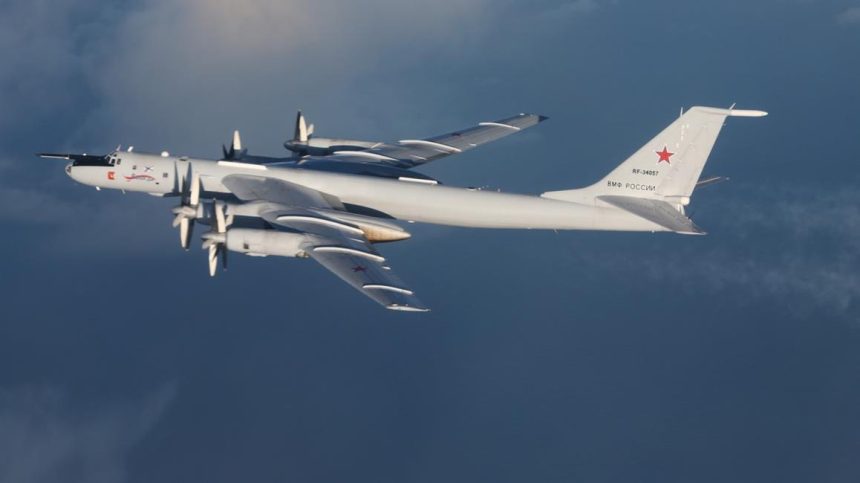Royal Norwegian Air Force F-35A jets on QRA (Quick Reaction Alert) intercepted two Tu-142 and escorting MiG-31 aircraft earlier today.
As we have already reported, RAF Typhoons intercepted and escorted two Russian Tu-142s flying in international airspace close to the UK airspace on Mar. 7, 2020. Interestingly, the two Russian aircraft were also intercepted by the RoNAF as they flew close to the Scandinavian peninsula.
The QRA mission in Norway is normally carried out by the F-16 from Bodø; however, two F-35A from Orland Air Station were put on alert as a reinforcement today. Therefore, when the Tu-142s came close to the Norwegian airspace, the two F-16s from Bodø were scrambled and carried out the first identification and after shadowing the Russian ASW and maritime patrol aircraft, they were relieved by two F-35s from Ørland.
“I am glad that the F-35 now contributes to understanding the situation and presence in our immediate areas. Our fighter jets can now take care of both Iceland and home. This shows that we have taken major and important steps towards getting operational benefit from the F-35”, said Lieutenant General Rune Jakobsen, commander of the Armed Forces operational headquarters.
Indeed, it’s at least interesting to notice that the F-35s that carried out the intercept were not those deployed to Iceland since Feb. 19, 2020, to support NATO’s Airborne Surveillance and Interception Capabilities to meet Iceland’s Peacetime Preparedness Needs (ASIC IPPN) mission. The purpose of the NATO mission, initiated in 2008, after the withdrawal of US forces from the island, is to provide air surveillance and interception coverage over Iceland, in order to maintain the integrity of the NATO airspace. RNoAF is the second F-35 operator to deploy the 5th generation aircraft in support of NATO’s Icelandic Air Policing: the first one was the Italian Air Force, that deployed its Lightning II jets to Keflavik in October 2019.
Interestingly, while not showing the F-35 in the vicinity of the Tu-142s as one might expect, the photographs released by the RNoAF show that one of the Tu-142s was an MR variant (Bear J) and that the aircraft was escorted by at least one MiG-31 Foxhound. The Tu-142MR “Bear J” is a VLF band radio communications relay platform whose mission is similar in concept to the one of US E-6A TACAMO: it provides a communications relay capability to submerged SSBNs, SSGNs and SSNs. The Bear J is based on the Bear F airframe but has a ventral fairing containing the VLF antenna cable reel and unique nose radome and antenna on the vertical tail.

Norwegian F-35As achieved the IOC (Initial Operational Capability) on November 6, 2019, becoming the third European country to reach IOC with the F-35 after Italy and the UK. The deployment to Iceland is a milestone towards full operational capability in 2025. The RNoAF plans to replace its F-16s, that are currently performing Quick Reaction Alert missions, by 2022, when there will be enough F-35s (out of 52 ordered), pilots and maintainers available to deploy to Evenes Air Station (Northern Norway).
H/T to @GrandelaNelson for the heads-up!








